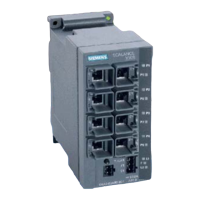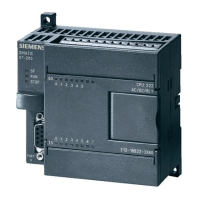Siemens S7-200 Driver
l Network Mode:This property is used to control how channel communication is delegated. In Load
Balanced mode, each channel is given the opportunity to communicate in turn, one at a time. In
Priority mode, channels are given the opportunity to communicate according to the following rules
(highest to lowest priority):
l Channels with pending writes have the highest priority.
l Channels with pending explicit reads (through internal plug-ins or external client interfaces)
are prioritized based on the read's priority.
l Scanned reads and other periodic events (driver specific).
The default is Load Balanced and affects all virtual networks and channels.
Devices that rely on unsolicited responses should not be placed in a virtual network. In situations where
communications must be serialized, it is recommended that Auto-Demotion be enabled.
Due to differences in the way that drivers read and write data (such as in single, blocked, or non-blocked
transactions); the application's Transactions per cycle property may need to be adjusted. When doing so,
consider the following factors:
l How many tags must be read from each channel?
l How often is data written to each channel?
l Is the channel using a serial or Ethernet driver?
l Does the driver read tags in separate requests, or are multiple tags read in a block?
l Have the device's Timing properties (such as Request timeout and Fail after x successive timeouts)
been optimized for the virtual network's communication medium?
Channel Properties - Master ID
Master ID: Specify the node number used by the Siemens S7-200 Driver on the network. Each channel must
have a unique Master ID. The valid range is 0 to 126.
Device Properties
Device properties are organized into the following groups. Click on a link below for details about the settings
in that group.
General
Scan Mode
Communication Timeouts
Auto-Demotion
Redundancy
Device Properties - General
www. ptc.com
11

